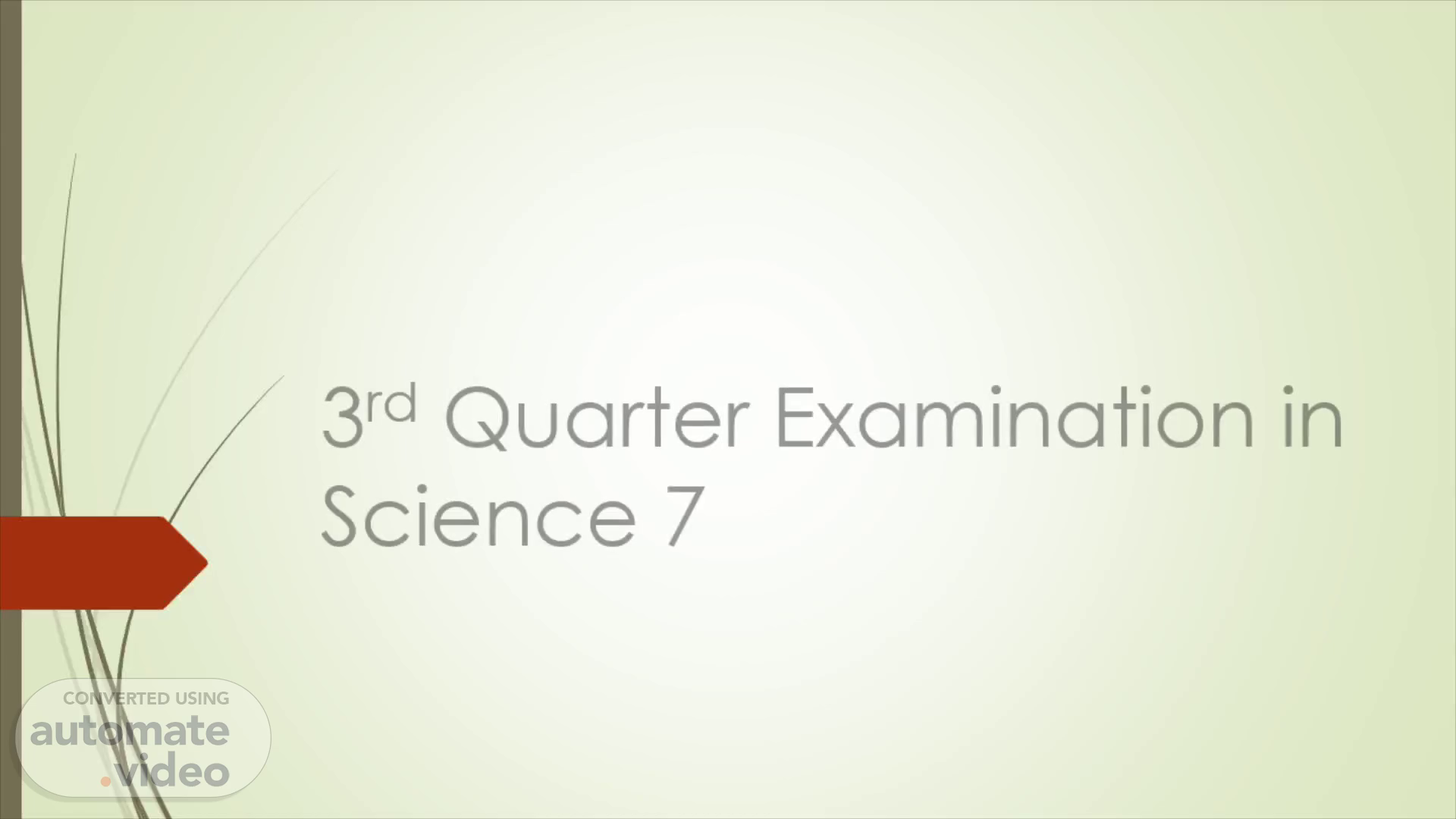
3rd Quarter Examination in Science 7
Scene 1 (0s)
[Audio] 3rd Quarter Examination in Science 7. 3 rd Quarter Examination in Science 7.
Scene 2 (6s)
[Audio] Speed plus direction is called ________________________. A. Velocity B. Acceleration.
Scene 3 (18s)
[Audio] 2. It measures the length of the total path travelled by the object. A. Displacement B. Distance.
Scene 4 (33s)
[Audio] 3. It is the change in velocity over a time interval. A. Speed B. Acceleration.
Scene 5 (48s)
[Audio] 4. Distance plus direction is called __________. A. Velocity B. Displacement.
Scene 6 (1m 2s)
[Audio] 5. The distance over time is called ___________. A. Velocity B. Speed.
Scene 7 (1m 16s)
[Audio] 6. What does the graph showing? A. Gradually speeding up B. Gradually slowing down.
Scene 8 (1m 30s)
[Audio] 7. What does the graph showing? A. Fast constant speed B. At rest.
Scene 9 (1m 44s)
[Audio] 8. What does the graph showing? A. gradually speeding up B. Gradually slowing down.
Scene 10 (1m 58s)
[Audio] 9. What does the graph showing? A. Constantly speed up B. At rest.
Scene 11 (2m 12s)
[Audio] 10. What does the graph showing? A. Fast Constant Speed B. At rest.
Scene 12 (2m 25s)
[Audio] 11. It is a vibration or disturbance in space that moves away from the source and carries energy. A. Wave B. Medium.
Scene 13 (2m 42s)
[Audio] 12. The movement of this wave is up and down or perpendicular to the source. A. Longitudinal B. Transverse.
Scene 14 (2m 58s)
[Audio] 13. The movement of this wave is side by side or parallel to the source. A. Longitudinal B. Transverse.
Scene 15 (3m 14s)
[Audio] 14. A type of wave that requires a medium in order to propagate. A. Mechanical wave B. Electromagnetic wave.
Scene 16 (3m 30s)
[Audio] 15. A type of wave that can travel into a vacuum and can propagate with or without medium. A. Mechanical wave B. Electromagnetic wave.
Scene 17 (3m 48s)
[Audio] 15. A type of wave that can travel into a vacuum and can propagate with or without medium. A. Mechanical wave B. Electromagnetic wave.
Scene 18 (4m 6s)
[Audio] 16. Which part of the wave below is the crest? A. 1 B. 3.
Scene 19 (4m 19s)
[Audio] 17. Which part of the wave shows the wavelength? A. 1 B. 3.
Scene 20 (4m 32s)
[Audio] 18. Which part of the wave is the trough? A. 2 B. 4.
Scene 21 (4m 45s)
[Audio] 18. Which part of the wave is the trough? A. 2 B. 4.
Scene 22 (4m 58s)
[Audio] 20. Which of the following scenarios would result in sound being produced? A. sharpening your pencil B. looking at a window.
Scene 23 (5m 14s)
[Audio] 20. Which of the following scenarios would result in sound being produced? A. sharpening your pencil B. looking at a window.
Scene 24 (5m 30s)
[Audio] 21. Human can hear from 20-20, 000 Hz which is called _______. A. Audible B. Ultrasonic.
Scene 25 (5m 46s)
[Audio] 22. It refers to how high or low a sound is. It is related to the frequency of the sound wave. A. loudness B. pitch.
Scene 26 (6m 4s)
[Audio] 23. How loud or soft the sound is produced is called _______. A. loudness B. pitch.
Scene 27 (6m 19s)
[Audio] 24. A sound wave is a __________. a. longitudinal wave b. transverse wave.
Scene 28 (6m 34s)
[Audio] 25. What happens to the sound an object makes when the speed of vibrations decreases (slow down)? A. its pitch rises B. its pitch becomes lower.